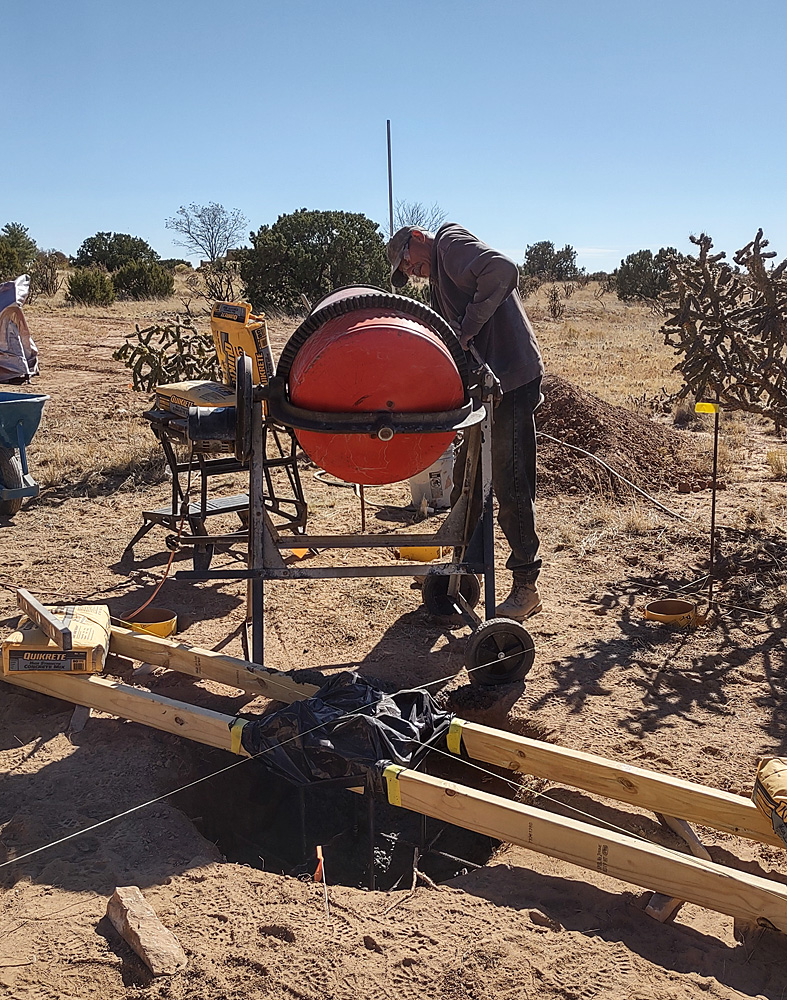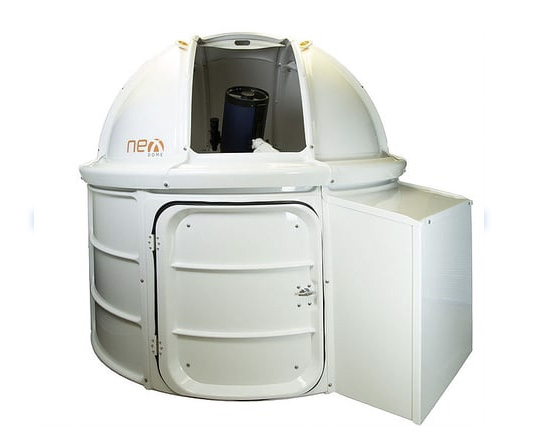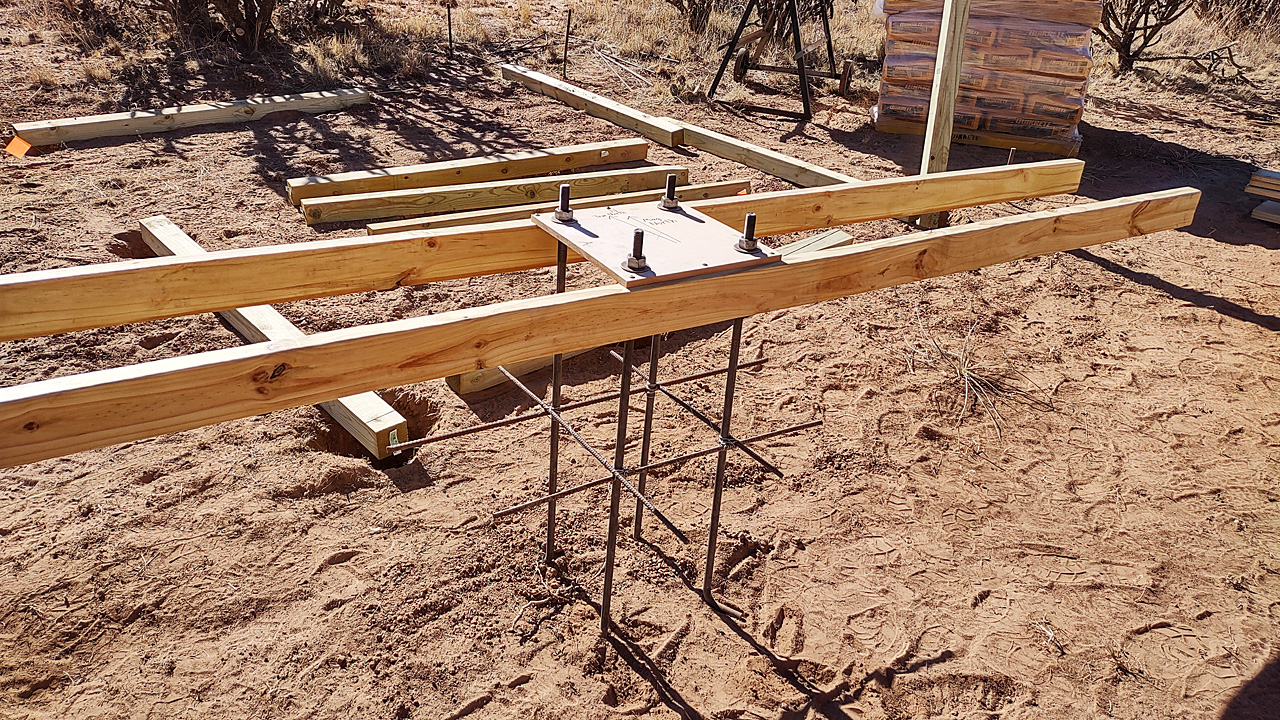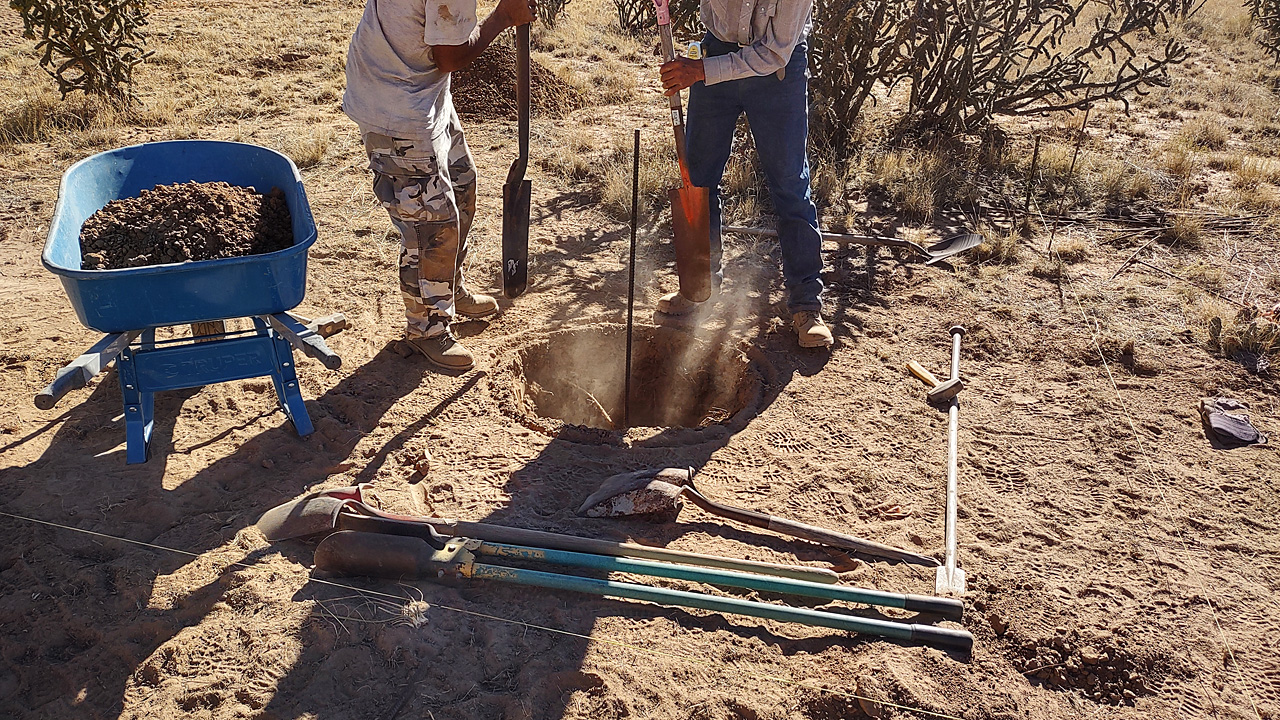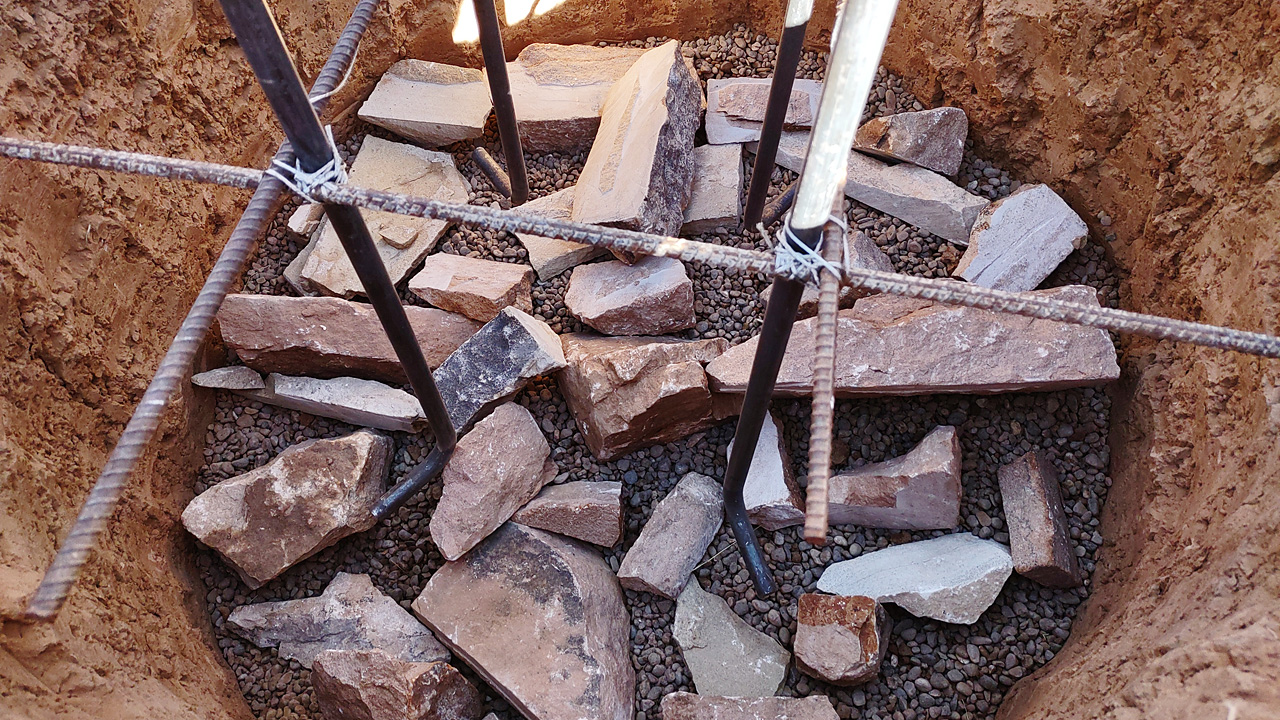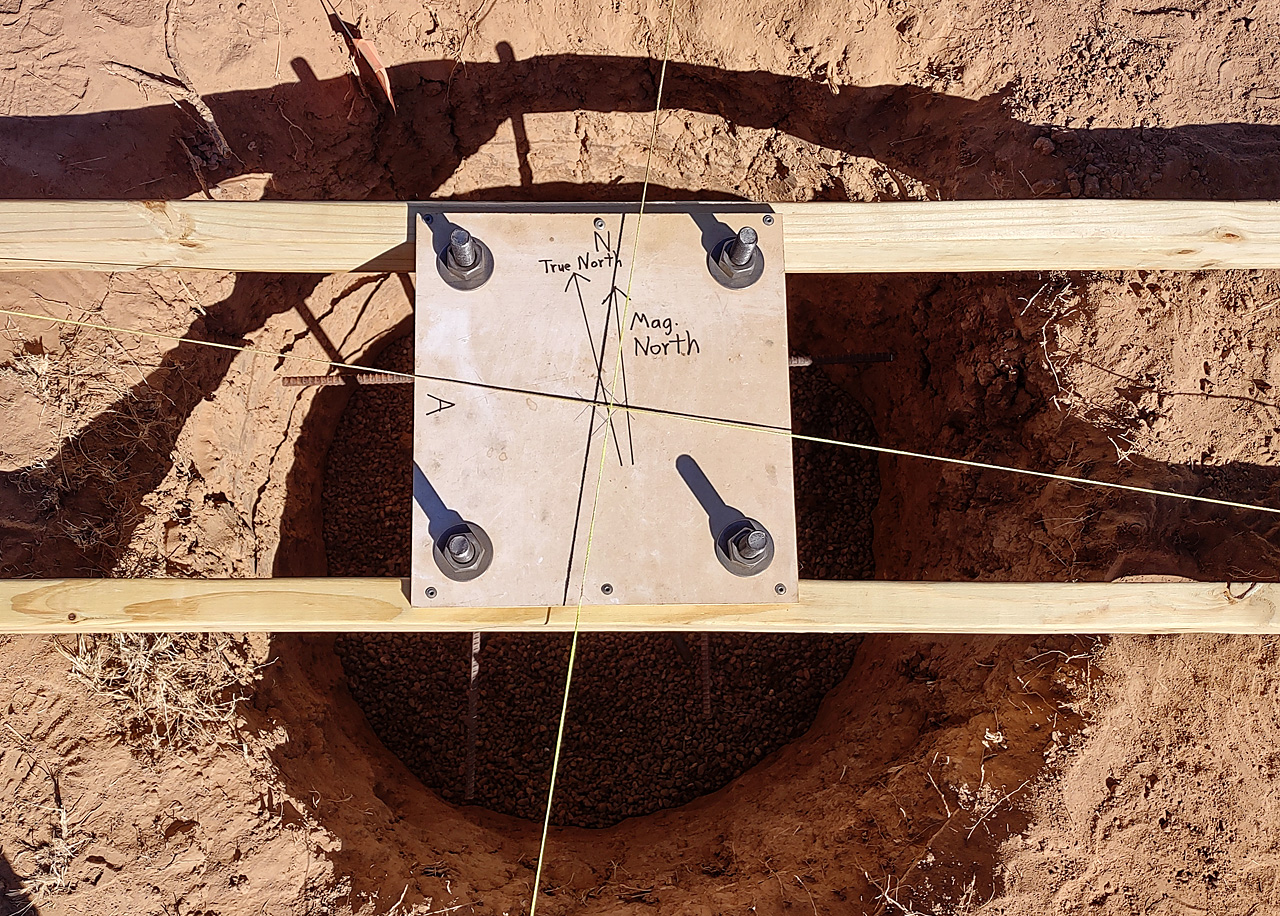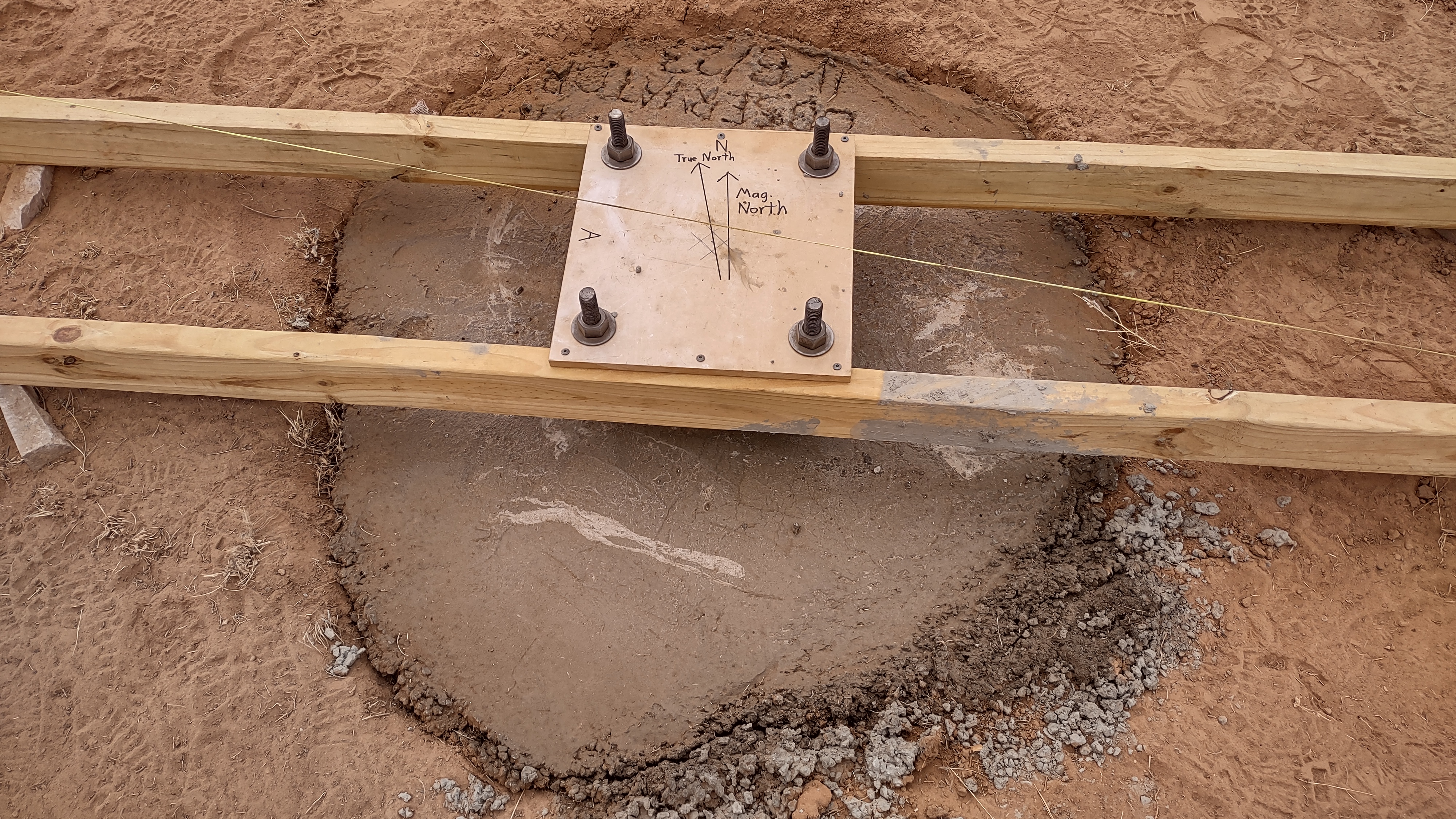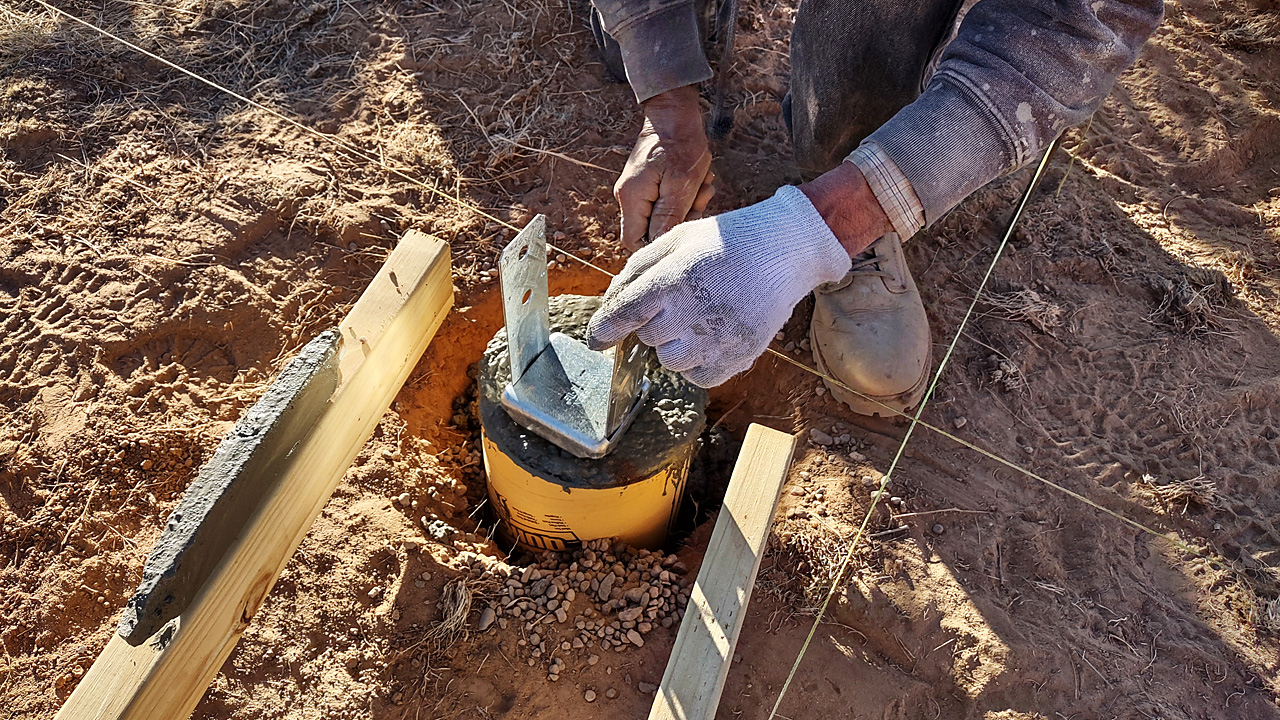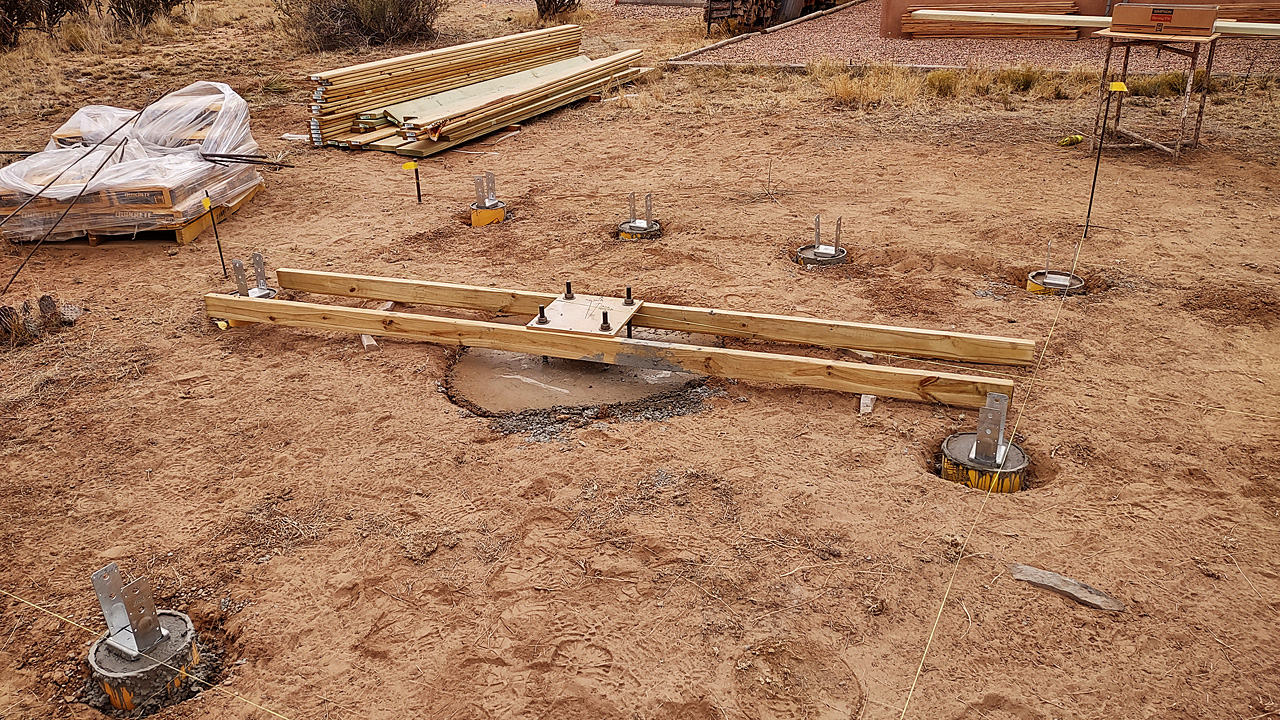Construction has finally begun on Wa-chur-ed Obervatory 2. It was difficult to select a location in my backyard that would satisfy a myriad of requirements, including approval from the HOA and (more importantly) my wife. It is just south of the west corner of the house, 25 feet away.
The old observatory was a “roll-off roof” (ROR) type, but this will be an actual dome, similar to this:
The base is 2.2 meters in diameter, and if you scale the image of the door from that you’ll see that “watch your head” is even more appropriate for this structure. Fortunately, I won’t need to go through that door as often because this observatory will be completely remote controllable.
The first step in the process was to fabricate a frame to which the pier would be attached:
The square piece of wood is a duplicate of the steel plate at the bottom of the pier, with holes in the same locations. This template is then attached to 4 rods of 3/4″ diameter and having threads at the top end. It’s not clear in this photo, but the bottom end of each rod is bent out to provide more vertical strength once it is encased in concrete. Pieces of rebar are attached in the middle to provide greater strength.
After clearing the area of (most) vegetation, we dug a big hole 3′ in diameter and 3′ deep. I hired a couple of guys to do this work. If I hadn’t the hole would still not be dug!
The rebar in the center of the hole marks the exact center of where the pier wants to be. They marked a circle around it and dug out that far.
Once the hole was completed we put some gravel and larger rocks in the bottom to make a good base for the concrete:
Next came the tricky part: After placing the pier frame in the hole it had to be adjusted as accurately as possible to make it level, pointed north, centered in the right location, and at the right height above the ground. The 2x4s attached to frame made it much easier to move it precisely, and held it in place while we poured the concrete. An 80 pound bag of concrete resting on each end of the 2x4s held it in place pretty well. Here you can see the marker strings over the reference point on the frame:
We covered the top with plastic to keep concrete off the threaded rods, but half way through the pour (when it would still be possible to tweak the position) we cut a hole in the plastic to expose the center mark and compared it to our marker strings.
Pouring the concrete into the hole was a bit nerve wracking because we had to be careful not to jar the frame out of place. Concrete is not a material that lends itself to delicate handling. After removing the plastic (and one of the marker strings, by accident):
All of the above work will eventually be hidden by a deck, and then the dome goes on top of the deck. To support the deck we need concrete footings, using “sonotube” concrete forms. Some of you may be familiar with another use of sonotubes – to make a dobsonian telescope.
As with the pier frame, the post supports had to be carefully placed to be at the right location, the right orientation, and the right height (to make the deck level). Location is determined by the marker strings, but in the above photo one string has been pulled aside after placing the post frame to provide better access.
When all of that was done the whole site looked like this:
I’m now waiting a few days for the concrete to set. The rest of the construction project is all on me, so it probably won’t go as quickly. The posts will support skirt boards, joists, and then the actual deck boards. But the posts are also 6′ high and will support cedar fencing around the whole structure, with a locking gate at the front. The door to the dome can also be locked, so it should be reasonably secure.
Stay tuned for the next installment of “Building WO2”.
